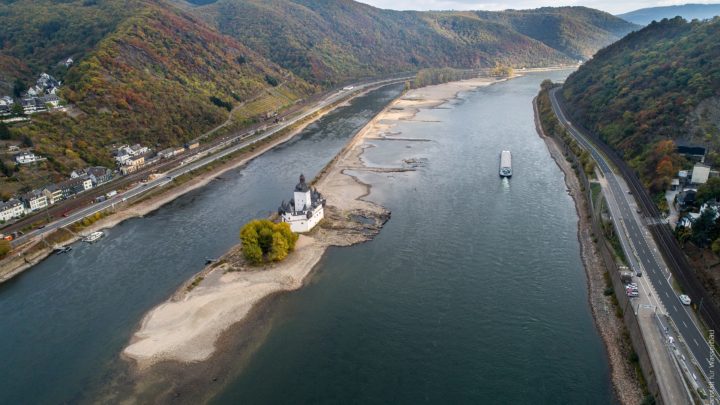
Yet, what made this year’s water shortage more striking was how early it started affecting river traffic. Previous summer droughts in Europe typically saw low water levels recorded in September or October. Yet this year, the depth at the chokepoint of Kaub, near Frankfurt, fell to 32cm on Monday 15 August.
That depth was even lower than the previous level of 35cm recorded at Kaub in 2003, according to data from the German Federal Waterways and Shipping Administration (WSV). Vessels need about 1.5m of Kaub reference waterline to sail fully loaded.
Barge rates to ship fuel from Rotterdam to Basel, Switzerland, reached near all-time highs.
Such problems on the Rhine are not new, but underline the difficulties that ports face with landside logistics, said consultancy Transport Intelligence (Ti).
Contargo, a Rhine intermodal terminal operator, issued a statement on 12 August concerning its river-barge operations, asserting that the water-level had fallen to such a degree that “our barges will not be able to sail without danger, and for reasons of safety we shall have to largely discontinue our navigation on the Upper and Middle Rhine”.
Other barge operators made similar statements. Essentially this meant that container and other cargo-type operations that normally use the Rhine to access much of western Germany had to shift to rail and road transport. This may have been a significant problem but was far from unprecedented, as the Rhine has experienced low water levels on several occasions over the past couple of decades.
Ti noted that barges provide a useful addition to landside logistics for the ports of Rotterdam and Antwerp. Both ports have seen sustained growth in volumes over the past several decades, and this has been paralleled by the development of additional container terminals, with Maasvlatke 2 being a good example.
However, developing landside logistics is less straightforward. The roads in both Northern Belgium and Southern Netherlands are heavily used, which is hardly surprising for such a populated region. New rail capacity has been created to support higher port volumes, but this also struggles to compete for space with local passenger services. The use of barges has opened up the possibility of using large intermodal terminals on the central Rhine, such as Duisburg, bypassing the congestion of the lower-Rhine region. “If the capacity of barge traffic is constrained, it will present an obstacle to growth for both port complexes,” Ti stated.
Much of the congestion in container ports worldwide is due to landside container logistics systems being overwhelmed by changes in container movement patterns. However, if container shipping continues to grow, the issue of substantial new infrastructure will have to be built to support it. This will be both expensive and politically difficult in many major port locations. But, of course, it will also be a major opportunity for logistics service providers and investors.